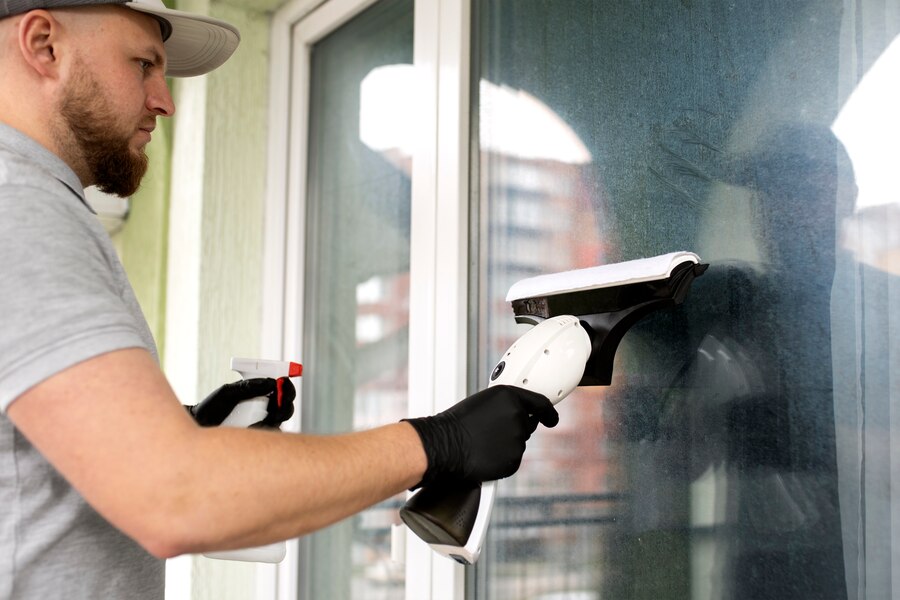Window tinting is a popular choice for vehicle owners and homeowners alike, offering a range of benefits from UV protection to enhanced privacy and improved aesthetics. However, for those new to the world of tinting, the array of options and considerations can be overwhelming. From understanding the different types of tints to choosing the right one for your needs and ensuring proper installation and maintenance, there’s a lot to consider.
In this comprehensive guide, we’ll walk you through everything you need to know as a first-time buyer to navigate the tinting landscape with confidence. Whether you’re looking to tint your car windows for added privacy and comfort or considering residential window tinting to protect your home and furnishings from UV damage, this guide is here to help.
We’ll start by helping you understand your tinting needs and local regulations, then delve into the various types of window tints available, discussing their pros and cons. Next, we’ll provide tips on choosing the right tint for your specific requirements and preparing for the installation process. Finally, we’ll cover aftercare and maintenance tips to ensure your tint looks great and lasts for years to come.
By the end of this guide, you’ll be equipped with the knowledge and confidence to make informed decisions about window tinting, ensuring you get the most out of your investment.
Understanding Your Needs
Understanding your needs is crucial when considering window tinting for your vehicle or property. Window tinting serves various purposes, and identifying your specific requirements will help you make informed decisions.
Firstly, assess why you want to tint your windows. Are you looking for increased privacy, reduced heat and glare, or protection against harmful UV rays? Understanding your primary goal will guide you in selecting the right type of tint that meets your needs.
Secondly, consider the legal aspects of window tinting in your area. Different regions have regulations regarding the darkness of tint allowed on vehicles or buildings. Knowing these regulations will prevent you from investing in a tint that doesn’t comply with the law.
Additionally, think about the aesthetic appeal you want to achieve. Some tints offer a sleek, stylish look, while others are more subtle. Your personal preference and the overall look you want to achieve should influence your choice of tint.
By understanding your needs, you can choose a window tint that not only enhances the appearance of your vehicle or property but also provides the functionality and benefits you desire.
Types Of Window Tints
There are several types of window tints available, each offering different benefits and characteristics. Here are the main types:
- Dyed Window Tint: This type of tint features a layer of dye between an adhesive layer and a protective outer layer. Dyed tint is known for its non-reflective appearance and its ability to absorb heat.
- Metalized Window Tint: Metalized tint contains small metallic particles that reflect heat and UV rays. It is durable and provides excellent heat rejection, but it can interfere with electronic devices.
- Carbon Window Tint: Carbon tint is a high-quality film that contains carbon particles. It is known for its matte finish, durability, and ability to block 40-50% of infrared radiation. Carbon tint provides good heat rejection and UV protection.
- Ceramic Window Tint: Ceramic tint is the highest quality tint available. It contains ceramic particles that are non-conductive and non-metallic, making it ideal for use with electronic devices. Ceramic tint provides excellent heat rejection, UV protection, and clarity, but it is also the most expensive option.
Each type of window tint has its own set of advantages and disadvantages, so it’s important to consider your specific needs and budget when choosing the right tint for your vehicle or property.
Choosing The Right Tint
Choosing the right tint for your windows is crucial to ensure you get the desired benefits and longevity from your investment. Here are some key factors to consider:
- Visible Light Transmission (VLT) Percentage: VLT percentage indicates how much light is allowed to pass through the tint. A lower VLT means darker tint. Choose a VLT percentage that meets legal requirements in your area and provides the level of privacy and visibility you desire.
- Heat Rejection: Look for tints that offer high heat rejection properties, especially if you live in a hot climate. This can help keep your vehicle or property cooler and reduce the need for excessive air conditioning.
- UV Protection: UV rays from the sun can cause damage to your skin and the interior of your vehicle or property. Choose a tint that offers high UV protection to keep you and your belongings safe.
- Film Quality and Warranty: Invest in a high-quality tint from a reputable manufacturer. Look for tints that come with a warranty to ensure that you are protected against any defects or issues that may arise.
- Appearance and Style: Consider the aesthetic appeal of the tint. Some tints offer a reflective or mirrored look, while others are more subtle. Choose a tint that complements the overall look of your vehicle or property.
- Professional Installation: Proper installation is key to the effectiveness of the tint. Choose a professional installer with experience in tinting to ensure a flawless finish.
By considering these factors, you can choose a tint that meets your needs and provides long-lasting benefits for your vehicle or property.
Preparing For Installation
Preparing for window tint installation is a crucial step to ensure a smooth and successful process. Taking the time to prepare adequately can help you achieve the desired results and avoid potential issues. Here are some key steps to follow when preparing for window tint installation:
- Clean the Windows: Start by thoroughly cleaning the windows inside and out. Use a mild detergent or glass cleaner to remove any dirt, dust, or debris. Cleaning the windows ensures that the tint adheres properly and results in a clean finish.
- Remove Obstructions: Clear the area around the windows to provide easy access for the installer. Remove any stickers, decals, or objects that may obstruct the tint application. This will help the installer work more efficiently and ensure a seamless installation.
- Communicate with the Installer: Before the installation begins, discuss your preferences and expectations with the installer. This includes the shade of tint you want, any specific areas you want tinted, and any concerns you may have. Clear communication will help ensure that the installer meets your needs and delivers the desired results.
- Arrange for a Suitable Location: Ensure that the installation location is suitable for the tinting process. The area should provide adequate lighting and ventilation for the installer to work comfortably. If the installation is taking place indoors, make sure the room is well-lit and well-ventilated.
- Plan for Drying Time: After the tint is applied, it will need time to dry and cure properly. Avoid rolling down the windows or touching the tint until it has fully cured. The installer will provide you with specific instructions on how long to wait before using your windows.
- Follow Aftercare Instructions: After the tint is installed, the installer will provide you with aftercare instructions. Follow these instructions carefully to ensure that your tinted windows remain in good condition. This may include avoiding harsh cleaning chemicals and using a soft cloth for cleaning.
By following these steps, you can effectively prepare for window tint installation and ensure that the process goes smoothly. Proper preparation will help you achieve the desired results and enjoy the benefits of tinted windows for years to come.
Aftercare And Maintenance
Aftercare and maintenance are essential for preserving the longevity and performance of your window tint. Here are some tips to help you maintain your tint:
- Avoid Cleaning Too Soon: Wait at least a week before cleaning newly tinted windows to allow the tint to cure properly.
- Use Gentle Cleaning Solutions: When cleaning tinted windows, use a mild soap or specialized window tint cleaner. Avoid using ammonia-based cleaners, as they can damage the tint.
- Use Soft Materials: Use a soft microfiber cloth or sponge to clean the windows. Avoid abrasive materials that can scratch the tint.
- Be Gentle: When cleaning, avoid using excessive pressure or scrubbing, as this can damage the tint. Use gentle, circular motions to clean the windows.
- Avoid Harsh Chemicals: Avoid using harsh chemicals or abrasive cleaning agents, as they can damage the tint. Stick to gentle, tint-safe cleaners.
- Regular Maintenance: Regularly inspect the tint for any signs of damage or peeling. Address any issues promptly to prevent further damage.
- Protect from Scratches: Be cautious when loading and unloading items from your vehicle to avoid scratching the tint. Consider using a protective film on the interior side of windows that are frequently exposed to potential scratches.
- Avoid Stickers and Decals: Avoid placing stickers or decals directly on the tinted windows, as removing them can damage the tint. If necessary, place them on the outside of the window.
By following these tips, you can ensure that your window tint remains in good condition and continues to provide the benefits you desire for years to come.
Navigating the tinting landscape as a first-time buyer can seem overwhelming, but armed with the right knowledge, you can make informed decisions that meet your needs and expectations. Understanding why you want to tint, knowing the types of tints available, and choosing the right tint for your situation are crucial steps in the process. Additionally, preparing for installation and properly maintaining your tint will ensure its longevity and performance.
Are you ready to enhance the aesthetics, comfort, and privacy of your vehicle or property with window tinting? Contact us today to learn more about our tinting services and how we can help you achieve your tinting goals. Whether you’re looking for UV protection, heat reduction, or privacy, we have the expertise and products to meet your needs. Don’t wait, take the first step towards a more comfortable and stylish environment with window tinting.





